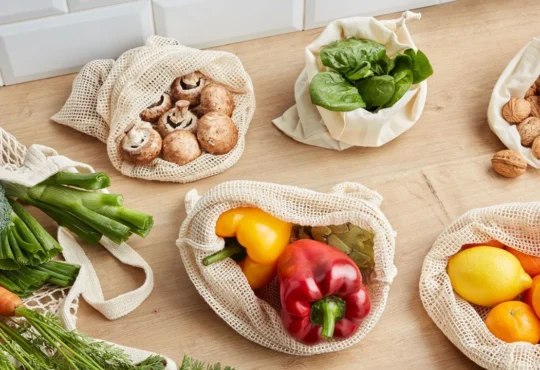Introducing color and vitality into your garden can be an incredibly fulfilling task. Perennial plants offer the perfect solution. Their charm lies in their ability to burst back to life year after year, filling your garden with a rich palette of hues and textures. However, their appeal extends beyond their aesthetic beauty. Perennials play a vital role in sustaining the ecosystem by providing food and habitat for various creatures.
In this article, we will delve into the best perennial flowers and plants you should consider for your garden and explore how they benefit the ecosystem.
1. Coneflowers (Echinacea)
Coneflowers are stunning, vibrant perennials that can turn any garden into a radiant spectacle. These beauties are a favorite among gardeners, thanks to their easy-care nature and resistance to pests and diseases. They flourish in full sun and well-drained soil.
Here’s an idea: why not cultivate a bunch of coneflowers to send a colorful birthday bouquet to a loved one? The assortment of colors – pink, purple, yellow, and red – can make anyone’s day brighter.
Coneflowers benefit the ecosystem in a significant way too. They are a top food source for pollinators like bees and butterflies, promoting biodiversity. Birds, particularly goldfinches, also feed on their seed heads during winter, providing essential nourishment when other food sources are scarce.
2. Hostas
Hostas are popular for their luxurious foliage, which adds lush greenery to any garden. These perennials thrive in shady spots and come in a variety of sizes, shapes, and colors. While their blooms are not as spectacular as others on this list, their large, leafy presence is a welcome addition to any garden setting.
Hostas are more than just visually appealing; they also play an essential role in the ecosystem. Slugs, snails, and a variety of insects feed on their leaves, providing them with essential nutrients. In turn, these creatures become food for birds and other larger animals, contributing to the food chain.
3. Black-Eyed Susans (Rudbeckia)
Black-eyed Susans are bright, cheery flowers that bloom from summer to fall. They are remarkably tough, withstanding heat, drought, and even poor soil. Their distinctive golden-yellow petals surrounding a dark center make them a standout in any garden.
In terms of ecological benefits, black-eyed Susans are invaluable. They attract a range of pollinators, including bees, butterflies, and even hummingbirds. Their seeds also provide a winter food source for birds. Planting these perennials contributes to a balanced ecosystem, promoting diverse wildlife in your garden.
4. Peonies
Peonies are the embodiment of elegance and charm. With their large, fragrant blooms in shades of red, pink, and white, they add a touch of luxury to any garden. Despite their delicate appearance, peonies are incredibly hardy and can live for more than 50 years if well cared for.
Ecologically, peonies are a magnet for pollinators, enticing them with their sweet fragrance. They also serve as a food source for caterpillars of certain moth species. By planting peonies, you’re supporting these beneficial insects and contributing to biodiversity.
5. Butterfly Bush (Buddleia)
As its name implies, the butterfly bush is an absolute magnet for butterflies. These fast-growing, easy-care shrubs offer a lengthy bloom time, from summer into autumn, presenting cone-shaped clusters of tiny, vibrant flowers that butterflies can’t resist.
Butterfly bushes do more than just attract butterflies. They also draw in other beneficial insects, like bees and hummingbirds, contributing to a healthy ecosystem. However, note that in some regions, butterfly bush can be invasive, so ensure you plant responsibly or choose a sterile cultivar.
6. Russian Sage (Perovskia)
Russian sage, with its light, airy appearance and aromatic, silver-gray foliage, is a beautiful addition to any garden. It thrives in dry, sunny conditions and is highly resistant to pests and diseases.
Beneficial insects such as bees, butterflies, and other pollinators are drawn to the Russian sage’s small, lavender-blue flowers. Furthermore, it’s deer and rabbit resistant, making it a superb choice for maintaining a garden bustling with wildlife.
7. Aster
Asters are late bloomers, bringing a splash of color to your garden in late summer and autumn when most other flowers have faded. Their daisy-like blooms come in a variety of colors, including purple, pink, and white.
Asters provide late-season nectar and pollen for bees and butterflies, offering a critical food source when other flowers are scarce. They’re also a host plant for certain butterfly species, where females lay their eggs, and the resulting caterpillars feed on the leaves.
8. Daylilies (Hemerocallis)
Daylilies are the perfect perennial for the busy gardener. They’re incredibly hardy, drought-tolerant, and virtually disease-free. Plus, they come in a dazzling array of colors and varieties. Each blossom only lasts for a day (hence the name), but with several buds on each stem, you’ll enjoy a continuous display of blooms throughout the summer.
From an ecological perspective, daylilies provide a valuable food source for various pollinators. Some varieties also offer nectar for hummingbirds, contributing to the biodiversity of your garden.
9. Lavender (Lavandula)
Lavender is prized for its lovely scent, beautiful purple blooms, and silvery-green foliage. It thrives in hot, sunny locations and is notably drought-tolerant, making it an excellent choice for gardeners in drier climates.
Beyond its beauty and fragrance, lavender offers substantial ecological benefits. Its sweet nectar attracts a plethora of pollinators, including bees, butterflies, and even some bird species. In addition, it’s deer and rabbit resistant, ensuring your garden will maintain its beauty while supporting a diverse range of wildlife. Moreover, it is popular in aromatherapy and cooking for its calming benefits.
10. Bleeding Heart (Dicentra)
Bleeding hearts are a captivating addition to any garden with their heart-shaped flowers that line arching stems. They typically prefer shady spots and provide a burst of color in spring.
These plants play a role in the ecosystem as well. They attract bees and other pollinators and are resistant to deer and rabbits. Additionally, their unique blooms provide shelter for beneficial insects, offering a safe space to take refuge.
11. Coral Bells (Heuchera)
Coral bells are versatile perennials, loved for their vibrant, bell-shaped flowers and striking foliage that ranges from green and silver to burgundy and caramel. These low-growing plants make excellent borders and are also beautiful in containers.
In terms of ecological impact, coral bells are fantastic for attracting hummingbirds with their nectar-rich flowers. Bees and other beneficial insects are also frequent visitors. They are even a host plant for the larvae of several species of butterflies and moths, enhancing your garden’s biodiversity.
Conclusion
Growing perennial flowers and plants in your garden is not just about creating a beautiful, vibrant space. It’s about fostering a habitat where different species can thrive, contributing to the ecological balance.
Perennials offer a wealth of benefits for both the gardener and the ecosystem. So, whether you’re an experienced green thumb or a budding gardener, consider making room for these hardworking, stunning perennials in your garden. Not only will you reap the rewards year after year, but you’ll also be playing a part in maintaining and enriching our precious ecosystem.








